Nestled between the Himalayan biodiversity hotspot and the Indo-Burma biodiversity hotspot lies Northeast India, a region blessed with unparalleled natural beauty and biodiversity. From its lush natural vegetation to its diverse soil structures and climates, every aspect of this region is fascinating, so as the Horticulture Products from NE India.
One of the most fascinating aspects of Northeast India is its culinary scene, which differs significantly from the rest of the country. Thanks to its unique climate and fertile land, Northeast India boasts a plethora of herbs and agricultural products found exclusively in this region. In this blog, we will discuss some of the lesser-known agricultural and horticulture products of NE India.
Black Rice of Manipur
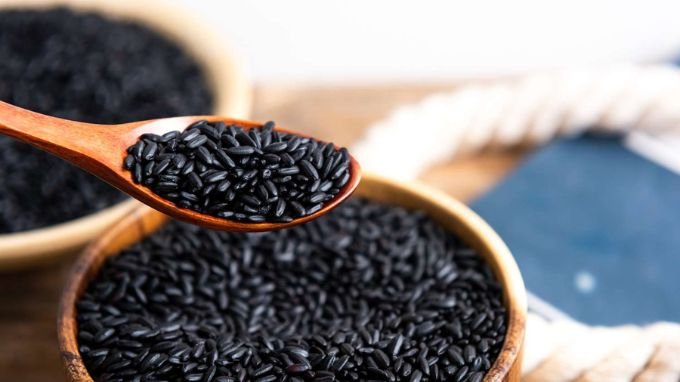
Manipur’s aromatic black rice, known as “Chak-hao,” is a gem that has been cultivated for centuries in the northeastern state of Manipur. Traditionally, Chak-hao was considered a luxury reserved solely for the royalty of Manipur, earning it the title of “forbidden rice.”
Characteristics: Chak-hao is revered for its distinct characteristics. Its has a sweet aroma and a buttery taste. Despite its moniker as “black rice,” it actually transforms into a beautiful shade of purple when cooked, adding visual appeal to any dish it graces.
Health Benefits: In addition to its cultural significance, Chak-hao boasts an impressive nutritional profile. It is rich in antioxidants, iron, and Vitamin E, making it a powerhouse of nutrients. Furthermore, it contains higher levels of protein and fiber compared to other varieties of rice, making it an excellent choice for those looking to incorporate more nutritional diversity into their diet.
Its non-glutinous nature also makes it suitable for individuals with gluten sensitivities, while its low glycemic index makes it a viable option for diabetes patients.
In 2019, Chak-hao or the Manipuri black rice received Geographical Indication (GI) tag, acknowledging its unique qualities.
How to Use: One of the most popular ways to enjoy Chak-hao is by preparing it into delectable desserts such as kheer (rice pudding) and porridge.
Joha Rice of Assam
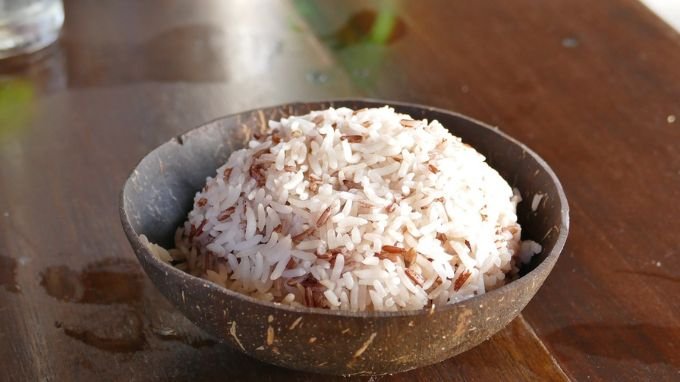
Joha Rice, hailing from Assam, shares a kinship with Manipur’s black rice. Much like its cousin, Joha rice is renowned for its aromatic qualities, with a specific variety even sporting a distinctive black hue.
Characteristics: Joha rice, a short-grain winter crop, is distinguished by its pronounced aroma and remarkable flavor. Its unparalleled scent makes it a sought-after commodity for export, garnering widespread popularity.
It’s noteworthy that Joha rice boasts an extensive variety, with over 50 subtypes each carrying unique characteristics.
Health Benefits: Joha rice serves as a nutraceutical aid in diabetes management, enriched with essential fatty acids like omega-3 and omega-6, offering a wholesome addition to one’s diet.
How to Use: Just like black rice of Manipur, the Joha rice of Assam is consumed as desserts i.e. kheer (rice pudding) and porridge. However, many varieties of Joha rice are the staple diet of Assamese people and they consume like any other rice day in and day out.
Lakadong Turmeric of Meghalaya

Lakadong turmeric, a distinctive turmeric variety indigenous to the Jaintia Hills of Meghalaya, holds significance for its exceptional curcumin content. Compared to standard varieties with curcumin levels ranging from 2% to 3%, Lakadong boasts a significantly higher curcumin content of up to 7% to 8%, along with oleoresin.
This unique turmeric finds applications in various industries including chemical, cosmetic, and food processing.
Health Benefits: The elevated curcumin content in Lakadong turmeric offers numerous health advantages. It aids in combating cancer, alleviating cough, reducing gastric acidity, and promoting skin health. Additionally, it bolsters immunity against diseases and facilitates the healing of wounds and inflammatory conditions.
Usage: Traditionally sun-dried and ground, our Lakadong turmeric is devoid of additives, artificial fragrances, or colors. Incorporate it into your daily cooking routines for seasoning, or add it to milk, smoothies, or warm water for a turmeric latte tea. Experimentation with other chai masalas is encouraged. For optimal benefits, consume Lakadong turmeric alongside black pepper, as the natural compound “piperine” in black pepper enhances curcumin absorption in the body.
Bhut Jolokia or King Chilli or Ghost Pepper
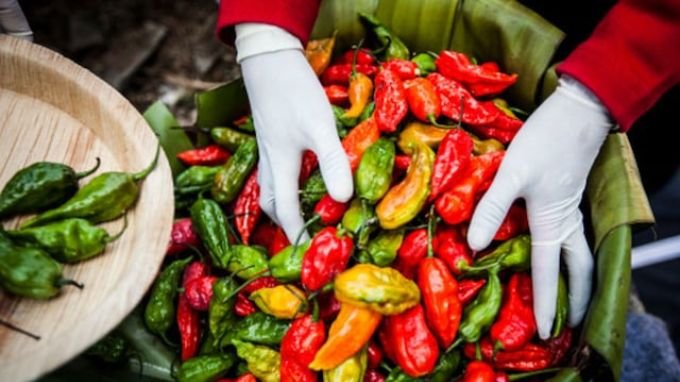
It is hybrid chilly pepper commonly grown in Assam , Nagaland and Manipur. As it is produced in many places of northeast iNdia, there are various local names. In Assam, it is known as Bhut/Bhoot Jolokia, Bih Jolokia or Kordoi Hira. In Nagaland, it is known as Naga Jolokia. In Manipur, it is called umorok or oo-morok or ‘tree chili’.
Among its various varieties like peach, yellow, chocolate, and purple, the red Bhut Jolokia is the most popular.
Health Benefits: Bhut Jolokia offers some benefits. Its heat can clear nasal passages for sinus sufferers and provide relief for migraines and headaches. The peppers’ antioxidants fight free radicals and boost the immune system. They also help speed up metabolism, aiding in weight loss.
Usage: Ghost peppers are used as a food and a spice. Bhut Jolokia is used both fresh and dried as a spice in dishes like curries, pickles, and chutneys. It’s often paired with pork, chicken, or dried/fermented fish. Additionally, its intense heat is used in nonlethal methods to control riots, like in hand grenades.
Bird’s Eye Chilli or Kon Jolokia
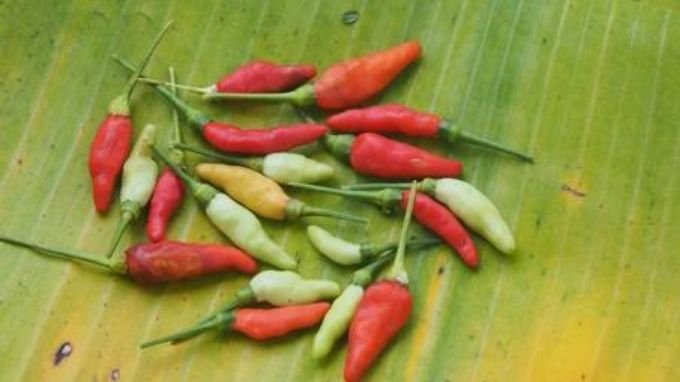
It is the miniature version of Bhut Jolokia. Smaller in size, but heat level as high as King Chilli. It is grown in all places in Assam , Nagaland and Manipur. Like Bhut Jolokia, Kon Jolokia has its varieties like peach, yellow, chocolate, and purple, the red and off-white Kon Jolokia is the most popular.
Health Benefits: Kon Jolokia offers some benefits. Its heat can clear nasal passages for sinus sufferers and provide relief for migraines and headaches. The peppers’ antioxidants fight free radicals and boost the immune system. They also help speed up metabolism, aiding in weight loss.
Usage: Kon Jolokia are used as a food and a spice. It is used both fresh and dried as a spice in dishes like curries, pickles, and chutneys. It’s often paired with pork, chicken, or dried/fermented fish.
Ginger From Karbi Anglong (Assam)

Ginger is a major cash crop in Singhasan Hills of Karbi Anglong district, cultivated using traditional Jhum and Tila methods. The area produces over 30,000 tonnes annually, with around 10,000 farmers involved.
Karbi Anglong ginger is distinct in aroma, flavor, and color, with a long shelf life. Tribal farmers mainly cultivate it. There are two types: Nadia, fibrous and sold locally, and Aizol, less fibrous and for export.
Health Benefits:
- Anti-inflammatory and Antibacterial: Boosts immunity and reduces free radicals.
- Improves Digestion: Relieves gut issues like constipation and acidity, aiding weight loss.
- Eases Cold Symptoms: Soothes throat, clears nasal passages, and promotes better sleep during colds.
- Treats Skin Infections and Enhances Hair: Fights acne, repairs skin, and improves hair texture.
Usage: Ginger powder is used for medicinal and culinary purposes.
Kaji Nemu of Assam

Kaji Nemu, Assam’s state fruit, is a highly underrated citrus fruit. Until recently, few knew of its benefits, aroma, or sweet-sour flavor. Assam boasts 16 species and 52 hybrid varieties of citrus, with Kaji Nemu being widely grown across the state, available year-round. This variety is notably juicier than other lemon types.
Kaji Nemu, also known as citrus limon, is GI-certified and resembles gondhoraj lebu but differs in taste. Its unique flavor even prompts some to chew its slightly bitter rind.
Health Benefits : Kaji Nemu is not only delicious but also rich in nutrients. Minister Bora highlights its abundance of citric acid, malic acid, vitamins (C, E, B6), essential oils, and other health-enhancing elements. It’s a go-to remedy for various digestive issues, from infants to the elderly, including expecting mothers, and aids in reducing cholesterol.
Usage: Like other citrus fruits, Kaji Nemu can be used in salads, lemon sodas, mixed with alcoholic beverages, and even paired with rice and plain dal, creating a heavenly combination. There’s also an elusive elaichi-flavored Kaji Nemu, perfect for making refreshing lemon juice, pickles, and garnishing various dishes.
Tezpur Litchi
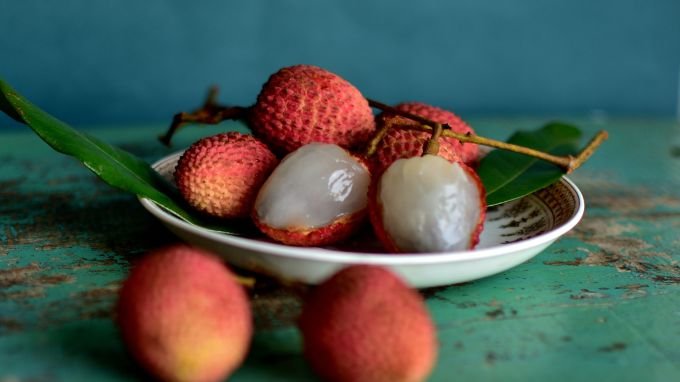
Litchi from Tezpur is renowned for its exceptional quality, delightful flavor, succulent pulp, and vibrant red hue. It’s larger than a strawberry but smaller than an apple, thriving in Tezpur’s humid climate. In 2015, this litchi variety received geographical indication (GI) status.
The fresh pulp boasts a musky, acidic flavor, turning very sweet when dried. Its sugar content, ranging from 15.59 to 16.28 percent depending on the variety, surpasses all other litchi varieties.Tezpur litchi is rich in Vitamin C and also contains potassium, phosphorus, calcium, magnesium, iron, and Vitamin B.
These Horticulture Products from NE India are not only unique but also produced in an organic way. However, availability of these products at markets outside the Northeast India is not up to the ark. Hope the concerned authority do the needful to promote these Horticulture Products from NE India.











